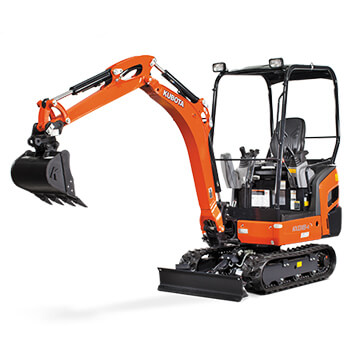
When it comes to selecting an excavator for your next project, it might not be as easy as you’d think. Excavators are not all the same and consequently don’t all do the same thing. If you’ve seen an advert for a for 5 tonne excavator sale and you’re not sure if it will be able to do what you need, you’ll find the information in this blog helpful.
Picking the right excavator for your next project will ensure that tasks are done properly.
Tiny but Mighty
Excavators are available in a variety of shapes and sizes. The most popular types are compact excavators more commonly known as mini excavators. They are referred to as mini excavators because their maximum weight lifting capacity is 5 tons and they can dig down to about 4 meters. Their compatibility allows them to perform the same functions as the larger machines, only on a much smaller scale.
Most mini excavators are designed using the tail swing configuration with a smaller undercarriage width. This simple design allows the machine to maneuver in confined spaces. The lower machine weight leads to lower fuel costs.
Fortunately, there are quite a few different mini excavators to pick from. All you have to do is decide which one is most suited for your project and terrain needs. Let’s have a look at a few of them.
Backhoe Excavator
Due to their versatility, backhoe excavators are commonly seen on construction sites all across Australia. The biggest advantage of using a backhoe excavator is the bucket attached to the boom. The bucket extracts soil towards the driver as it lifts, thereby giving the operator more visibility.
These types of excavators are ideally suited to small to medium-sized projects such as residential construction projects or foundation building.
Backhoe excavators are commonly used for the following tasks:
- Picking up and off-loading debris and other construction materials
- Soil and gravel extraction
- Moving materials such as sand and gravel from one place to another
Crawler Excavator
The crawler excavator, commonly referred to as track excavator, has increased stability, efficiency, and balance. This is courtesy of the chain tracked wheel system, which although slower, has better stability. An added advantage is its ability to be used with a variety of attachments.
This makes it a versatile unit because you can do several tasks with only one machine. Kubota is one of the more popular brands when it comes to crawler excavators.
Crawler excavators are perfect for a whole array of tasks around your project site. Some of these functions include:
- Landscaping
- Earthmoving
- Crushing
- Trench digging
- Material handling
Wheel Excavator
These types of excavators offer power, mobility, and reliability. While they are generally not as popular as the standard crawler models, some of their advantages include their two-piece hydraulic adjustable booms, added lift capacity, and lower operation cost.
A main deciding factor to choose these units is the terrain that you’ll be working on. Since the carriage is positioned higher than those of crawlers, some digging depth is sacrificed. On the flip side, higher carriages increase the general center of gravity, making work on slants and slopes a lot easier to handle.
Wheel excavators are therefore more suited to the following functions:
- Lifting jobs
- Road work
- Slope work that requires the machine to work at an angle
Long reach excavators are for those projects that have jobs in those difficult to reach areas. These machines have extendable arms that allow that can reach 30 meters. That makes it perfect for jobs that require work across a trench or over a high embankment.
These types of excavators are used primarily for the following:
- Dredging material from channels
- Demolitions
- Crushing jobs
- Cutting, if used with attachments
Knuckle Boom Excavator
You may think the knuckle boom excavator looks like the standard, bigger excavator models. The only significant difference between a big model and this compact machine is the extra joint in the lifting arm.
The extra joint enables the machine to swing from left to right. This action gives the machine more precision and better movement while digging. The extra joint makes it easier to reach odd places.
The most common jobs for the knuckle boom excavator include the following:
- Excavating around obstacles
- Moving around tight spaces
- Extensive digging jobs that require additional stability
Advantages of Mini Excavators
Just because you have a big project to tackle, doesn’t mean you need the biggest machine to do it. There are several advantages to using mini excavators. Some of these include:
- Easy to transport to and from different sites
- Less wear and tear on the components
- Operation and maintenance is cheaper making them very cost-effective
- Easy to access and operate meaning anyone in your crew can learn to use them
- Perfect for getting in and out of narrow spaces
- Can easily maneuver between buildings and even under trees
- An assortment of attachments means one machine can perform many different tasks
- Smaller machines are quieter than bigger machines, making it ideal to use in residential areas
Conclusion
With this newfound knowledge about the different types of excavators, you will probably never look at excavators the same way again! No matter the project, there’s an excavator made for it. Selecting the correct machine with the right attachments means your project will be done properly the first time round!

Leave a Reply